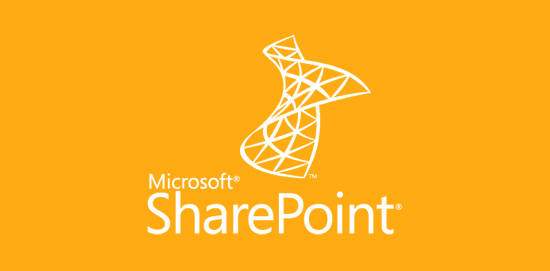The SharePoint Advantage: removing obstacles to collaboration
SharePoint is regarded by many IT departments as their Swiss army knife. It enables collaboration, team and project management, electronic content and records management, intranets, extranets, portals and more. All out of the box. However, some businesses still report failing to make full use of the many benefits available.
We asked Martin Neale, Managing Director of Microsoft Gold Partner, ICS Solutions, for his advice on how you can remedy the problem.
Take a strategic approach
At present, Neale says most businesses approach SharePoint from a tactical perspective - for example, to facilitate inter-departmental collaboration for a specific product launch or to create an extranet for a particular user community. “While these standalone initiatives are often successful, once organisations try to broaden their usage, they invariably encounter cultural and operational obstacles, but perhaps more crucially, gaps in their internal skills,” he says.
Neale believes such problems not only result in a lengthy roll-out cycle, but also delay the realisation of business benefits. “To overcome these challenges, companies should consider a strategic rather than tactical approach,” he says. “This means replacing the reactive one-off SharePoint instance with the proactive deployment of a collaboration service that can be leveraged time and again by different teams and departments.”
But surely that will require additional investment? Not if you take a long-term view, according to Neale. “Of course, the initial setup is likely to be more expensive, but if you spread this across multiple implementations, then the overall cost drops dramatically,” he says. “The economies of scale are such that a 500-instance implementation of collaboration tools is negligibly more expensive than a ten-instance implementation.”
A repeatable model
And what about the problems with drawn-out roll-outs? “We’ve developed a repeatable approach based on ‘pre-packaged’ components that are assembled together to create a complete solution,” he says. “For example, we’ve created a number of baseline accelerators that can be used for tactical deployments as well as service stacks for those customers ready to take a strategic approach. They maximise a company’s initial investment and are ideal for multiple SharePoint deployments.
“Part of our SharePoint Adoption Framework 2012, this repeatable model reduces risk and effort for companies - and helps them facilitate that all-important shift in culture. It’s a deployment methodology that places the emphasis on upfront strategic planning and provides technical expertise with the platform and overall ecosystem to address back-office integration and appropriate use of third-party applications. As a result, new websites, extranets, intranets and team portals can be launched in a matter of weeks.
According to Neale, this Framework aligns closely with several customer drivers. “Its flexibility of deployment through a component led approach allows companies to deliver real value and ROI quickly, whilst also encouraging the best practice of placing SharePoint at the heart of their business, enabling them to scale for tomorrow’s challenges.
Prepare for a surge in demand
By simplifying implementation in this way, Neale believes organisations could soon experience a dramatic surge in demand for SharePoint sites. “IT departments should therefore ensure that their backend infrastructure is ready and resilient - otherwise their businesses could be facing failure all over again,” he says.
“Adopting a private or public cloud model is a good way of ensuring the flexibility to cope with a burgeoning and motivated SharePoint community - both in terms of licences (for example C3Collaboration or Office 365) and computing resources (such as C3Infrastrucutre or Windows Azure). By assembling all the right components – be they cultural, technical or operational - companies quickly realise the full potential of SharePoint and empower staff to operate more flexibly.
“For instance, we recently helped Harrods undertake a proof of concept that included evaluating how the solution could be used across the business. Within four months they’d deployed a collaboration platform that includes wiki templates, pages and staff directories. The platform not only empowers users and safeguards information accuracy, but also delivers financial savings.”
Neale concludes: “One thing’s for sure, with over 70% of organisations having deployed SharePoint in some form, I’m in no doubt that the technology will be around for a long time to come,” he says. “With a little upfront planning and the assistance of tried-and-tested methodologies, it’s easy to massively improve both take-up rates and value to the business”
CASE STUDY
Harrods uses SharePoint 2010 to empower its diverse workforce
World-famous retailer Harrods chose ICS Solutions to help implement an intranet/extranet solution based on SharePoint 2010 to improve collaboration and information sharing among its staff and associates.
Internal communication is a challenge for Harrods, which has over 8,000 full-time and part-time employees and external associates working in its London-based store. The retailer opted for SharePoint 2010 to increase employee engagement by surfacing and centralising all news and information. It says the intranet has improved corporate communications and collaboration among its blended workforce and as an additional benefit expects to save £75,000 on printing and distribution of information.
“We decided to use SharePoint 2010 for the Intranet because it offered so many of the features we needed to meet our requirements,” says Kieron Bissett, People Management Applications Manager at Harrods. “ICS Solutions were right for the project due to their proven expertise and wealth of SharePoint knowledge”.
The four-month project was completed in two levels, with a corporate intranet offering internal access and a secure extranet - which mirrors the Intranet - providing read-only access. The intranet also allows Harrods to comply with UK legislation which states that all staff should have access to the same benefits and information. Harrods plans to continue driving investment in the intranet, further developing additional features to its specific needs.
Read the full case study: https://www.microsoft.com/casestudies/Case_Study_Detail.aspx?CaseStudyID=710000000651
